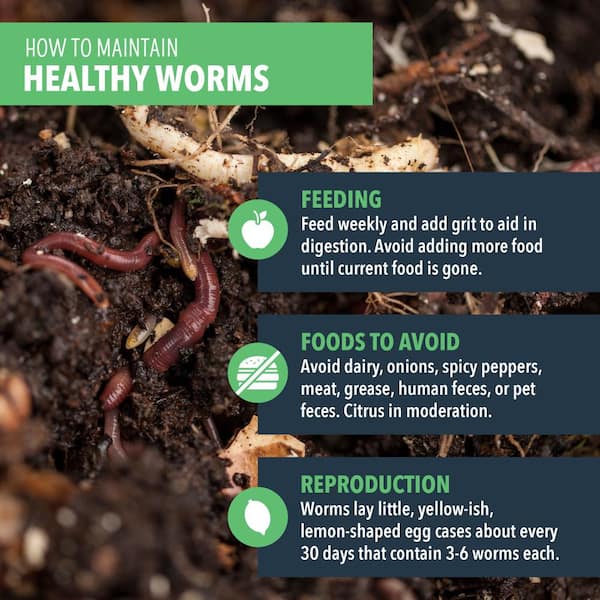North Carolina Worms Things To Know Before You Buy
North Carolina Worms Things To Know Before You Buy
Blog Article
See This Report on North Carolina Worms
Table of ContentsFacts About North Carolina Worms UncoveredThe Buzz on North Carolina WormsThe Of North Carolina WormsThe Only Guide to North Carolina Worms
Example: 1-gallon of worm spreadings to 4 gallons of potting mix. 1/2 mug in the bottom of the growing opening for smaller plants. 1 mug for bigger plants.
The enhancement of tea can also include raised microbial biomass to your dirt. You can always side-dress your plants with worm spreadings at any kind of time. Simply keep in mind, the microorganisms will certainly die if exposed to UV rays (Sunlight), so be certain to cover the castings with an inch approximately of soil.
This frustrated them for years until the testing techniques became much better. It would certainly get much better(with even more spreadings), level off, and after that decline. Too lots of worm castings would accelerate the growth to a rate that the plant can not recover from.
Top Guidelines Of North Carolina Worms
I have stated the merits of worm spreadings for concerning 2000 words. Worm spreadings are no different. It takes time to produce quality worm castings.
Worm castings absolutely set you back more than chemical plant foods. Worm castings are on the cheaper end of organic plant foods. (50 gallons per year) It is a much more challenging and very pricey financial investment to generate large quantities of worm castings.

Creating a healthy soil might be the biggest advantage of worm castings. We discussed worm spreadings NPK and also the appropriate nutrient evaluation that must apply to worm spreadings.
Excitement About North Carolina Worms
We talked regarding some of the disadvantages connected with worm spreadings. I covered a whole lot of product in this write-up.
The upright burrows are generally open, although the worms cap the top with residue and excrement. Roots require oxygen for their development, whereas they create carbon dioxide that requires to leave the dirt.
Earthworms boost porosity by two mechanisms: (1) by creating permanent burrows, and (2) by improving dirt gathering. Aggregation is improved by the mixing of dirt and raw material in the earthworms' guts. Lake Rhodhiss Bait. These extremely steady aggregates are transferred by some earthworms in their burrows, and by others at the surface of the soil


In one more research study, earthworms were approximated to eat 4 to 10 percent of the leading 6 inches of the soil every year. Dirt compaction lowers the porosity of the dirt.
The Only Guide to North Carolina Worms
Normal earthworm populations can conveniently eat 2 bunches of completely dry issue per acre annually, partly digesting and mixing it with soil. The importance of earthworms to blend surface area deposit with soil becomes very clear in dirts that do not have any type of earthworms. Most of our Pennsylvania soils contend the very least some earthworms, and the effect of their complete lack, consequently, can not be noted.
(https://answers.informer.com/user/northcarolinaworms)In these soils, the formation of topsoil with affordable raw material web content did not happen, causing inadequate plant development. Once the cause was established, the government of the Netherlands started a campaign to present earthworms. After the intro of the earthworms, a dark topsoil layer was created, and plant development raised significantly.
They live mostly from partly decayed natural matter that is already included in the dirt. These varieties consume big amounts of dirt that they blend with digested crop residue in their intestines.
Their burrows continue to be open, although they cover the top with plant deposit that they draw to the entryway. These species consume significant amounts of dirt that they blend with absorbed residue in their guts. Their waste matter is primarily transferred at the surface area of the soil. The nightcrawler Lumbricus terrestris is one of the most famous member of this group.
Report this page